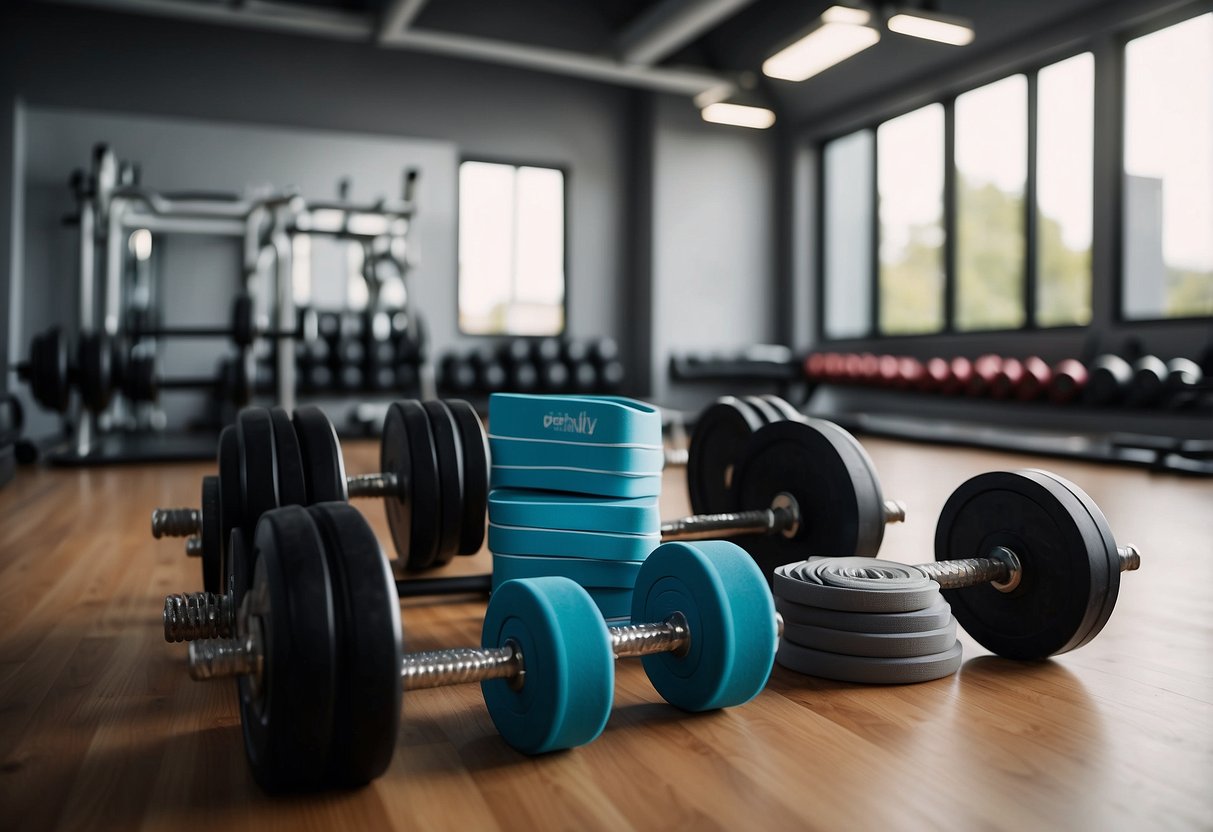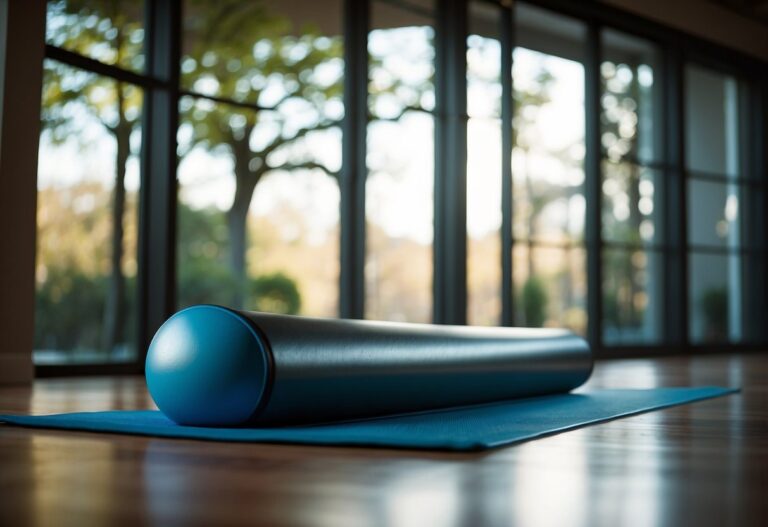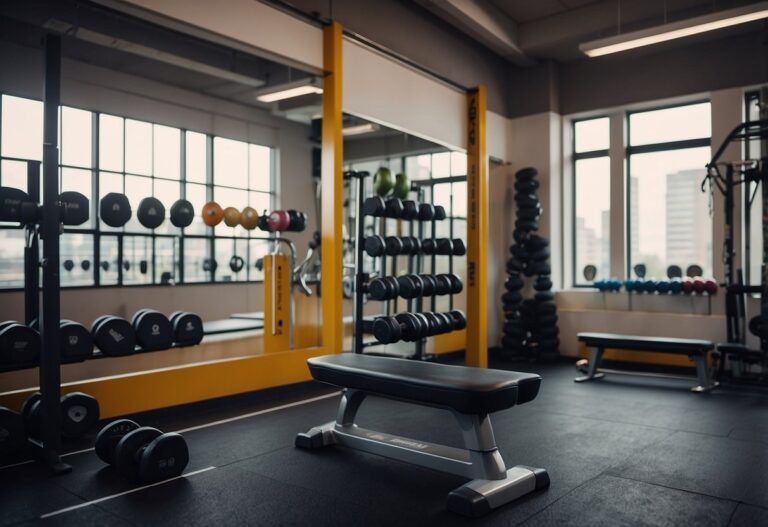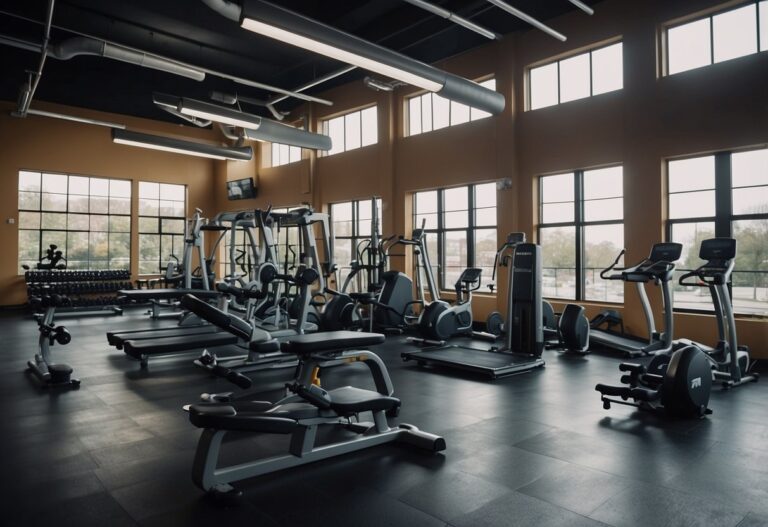Working out at the gym can be a bit overwhelming, especially with all the different machines and equipment available. For beginners, it’s important to start with exercises that not only match your fitness level but also help you get comfortable with the equipment. Understanding how to use gym equipment correctly can make your workouts more effective and reduce the risk of injury.

When you know the basics, you can start to customise your training to meet your personal fitness goals. This article will share some practical tips to help you navigate the gym with confidence and get the most out of your workout sessions. By the end, you’ll feel ready to take on any machine at the gym.
Use resistance bands for added intensity
Resistance bands are fantastic for boosting the intensity of your workouts. They are versatile and can be used for various exercises, making them perfect for home or gym use.
When doing squats, place the band under your feet and hold the ends at shoulder height. This creates extra tension as you squat down. It’s a great way to challenge your muscles.
For upper body workouts, try looping the band around a barbell. Hold the band tight while performing bench presses. This added resistance can help build more muscle and strength.
Another effective exercise is the leg extension. Loop the band around your foot and hold the ends in your hands. As you extend your leg, the band adds resistance, working your legs harder.
Using resistance bands can make regular exercises more challenging and effective. You can achieve significant strength gains with these simple, portable tools. For more specific exercises, refer to this guide on resistance band workouts.
Incorporate Free Weights into Your Routine
Free weights are a great addition to your gym routine. They help you build strength and improve muscle coordination.
Start with simple exercises like squats and deadlifts. These moves engage multiple muscle groups and boost overall strength.
Use dumbbells for exercises such as bicep curls and shoulder presses. They offer versatility and can be easily adjusted for various weights.
Remember to maintain proper form. Poor technique can lead to injuries. Keep your back straight and avoid jerking movements.
Adding free weights can make your workouts more dynamic and effective. Give it a try!
Try Compound Exercises like Deadlifts

Deadlifts are an excellent compound exercise that targets multiple muscle groups at once. When you perform deadlifts, you’re working your back, glutes, hamstrings, and core. This makes it a very efficient movement for building overall strength.
To start, make sure you have the proper form. Keep your back straight and your core tight. Lift with your legs, not your back, to avoid injury.
If you’re new to deadlifts, start with a lighter weight to get your form right before moving up to heavier loads. Using a mirror or recording yourself can help you check your technique.
Consider using deadlifts in your routine to maximise your workout efficiency. Adding deadlifts can help you build strength that translates into various other exercises and daily activities. Always warm up and stretch before lifting to prepare your muscles and joints.
Utilise kettlebells for functional training
Kettlebells are fantastic for functional training. These workouts help improve everyday movements and boost overall fitness.
Start with basic exercises. Try kettlebell swings or goblet squats. These moves engage multiple muscle groups and enhance strength and balance.
You don’t need a lot of time. A quick HIIT kettlebell circuit can be highly effective. Perform each exercise for 40 seconds, rest for 20, and repeat.
Use just one kettlebell. Moves like single-arm swings build strength and coordination. This is great if you’re short on equipment.
Mix up your workouts. Vary your exercises to keep things interesting and challenging. This helps work different muscles and prevents boredom. Try combining lifts, swings, and rows for a full-body routine.
Always focus on form. A proper technique prevents injuries. Keep your back neutral, brace your core, and move steadily. If you’re new to kettlebells, consider getting guidance from a trainer.
Functional training with kettlebells is versatile and effective. Whether you have 10 minutes or longer, you can get a solid workout in. Enjoy the benefits of improved strength and everyday function.
Incorporate Plyometrics for Explosive Power
To boost your explosive power, try adding plyometric exercises to your workout. Plyometrics involve quick, powerful movements that help build strength and speed.
One great exercise is the plyometric push-up. Start in a classic push-up position, lower your chest, and then push up forcefully to lift your hands off the floor. This boosts your upper body strength.
Box jumps are another useful move. Stand in front of a sturdy box, bend your knees, and jump onto the box. Step down carefully and repeat. This helps develop leg power and coordination.
Lateral bounds can also be beneficial. Stand with your feet together and jump sideways, landing softly on one foot. This improves your ability to move laterally and enhances balance.
Use Rowing Machines for Full-Body Workouts
If you’re looking for a full-body workout, rowing machines are a great option. They engage multiple muscle groups, including your legs, core, and arms.
Begin with a warm-up. Try mixing in some light cardio, like a five-minute jog, before starting on the rower.
Focus on your form. Ensure your feet are securely strapped in so you get the most powerful stroke. Once you’re settled, start rowing with a steady rhythm.
Incorporate interval training. For example, row at a high intensity for 20 seconds, then rest for 10 seconds. Repeat for a total of 4 minutes.
Explore different routines. Rowing for 1,500 meters with rest periods can help improve both speed and endurance.
Don’t forget to cool down. Stretch after your workout to prevent muscle soreness and enhance flexibility.
Using a rowing machine can be both challenging and enjoyable. Give it a try on your next visit to the gym!
Include a mix of cardio and strength training
When designing your workouts, you should include both cardio and strength exercises. Cardio helps improve your heart health and endurance, while strength training builds muscle and boosts metabolism.
Try circuit training. Alternate between strength and cardio exercises. For example, do 45 seconds of squats, followed by 30 seconds of jumping jacks. This keeps your heart rate up and works multiple muscle groups.
Incorporate HIIT. High-Intensity Interval Training combines short bursts of intense cardio with periods of rest or lower-intensity activity. This can be running sprints, followed by walking. It’s an effective way to burn calories and improve fitness.
To balance things out, spend some days focusing more on strength movements like deadlifts or push-ups, and other days on longer cardio sessions like running or cycling. This variety keeps your workouts interesting and ensures that you’re working all aspects of your fitness.
Ensure Proper Form with a Power Rack
When using a power rack, it’s crucial to maintain the right form. This helps prevent injuries and makes your workouts more effective.
First, always set the safety pins at the correct height. They should be just below where the barbell would be at the lowest point of your lift. This will catch the bar if you can’t complete a rep.
Next, keep your back straight and core engaged during exercises. This is especially important for squats and deadlifts. A strong core stabilises your body and prevents unnecessary strain on your lower back.
Finally, use the mirrors in your gym to check your form. They can help you ensure that you’re lifting with the right posture. If you don’t have mirrors, consider filming your lifts for self-review. Regularly checking your form can lead to better performance and safety.
Opt for a Variety of Dumbbells

Using different types of dumbbells can keep your workouts fresh and effective. Adjustable dumbbells are great if you have limited space, as you can change the weight easily.
Fixed-weight dumbbells come in many sizes, allowing you to increase or decrease resistance as needed. This helps you tackle different exercises without interruption.
Incorporating dumbbells with different grips, such as rubber or hexagonal ones, can improve your comfort and technique during workouts. Try mixing these into your routine for a better training experience.
Implement Bodyweight Exercises Like Push-Ups

Push-ups are excellent for building strength without needing any equipment. Start by placing your hands shoulder-width apart on the floor. Keep your body straight from head to heels and lower it until your chest nearly touches the floor, then push back up.
Try different variations to target different muscles. For instance, place your feet on a bench for elevated push-ups. This increases the difficulty and focuses more on your shoulders.
Another variation is the diamond push-up, where your thumbs and index fingers form a diamond shape. This works your triceps more intensely.
Be consistent with your push-ups, and always focus on maintaining proper form to prevent injuries. Gradually increase your reps and sets as you get stronger.
Proper Form and Technique
Using gym equipment correctly is important for getting the best results from your workouts and avoiding injury. This involves setting up equipment to fit your body, knowing common mistakes, and paying attention to what your body tells you.
Adjusting Equipment for Your Body
Proper equipment adjustment is the first step to using gym machines safely and effectively. Always start by aligning the machine settings to your height and body size. For example, when using a leg press, adjust the seat so your knees form a 90-degree angle. It’s crucial to ensure the machine’s handles, seats, and other parts are positioned correctly to support your movements.
Check the weight load before starting. Begin light to test your range of motion. If you feel discomfort, readjust. Each machine has different adjustments, so take time to familiarise yourself with each one. Incorrect adjustments can lead to poor form and injuries. Always read the machine’s instructions or ask a gym trainer for help.
Common Mistakes to Avoid
Avoiding common mistakes can save you from pain and setbacks. A big blunder is using too much weight. Lifting more than you can handle usually leads to bad form, which increases the risk of getting hurt. Start light and increase weight gradually. Another pitfall is moving too quickly. Fast, uncontrolled movements can strain muscles and joints.
Keep an eye on your posture. Slouching or arching your back can cause injury. For instance, when using the rowing machine, maintain a straight back and avoid rounding your shoulders. Not warming up is another common error. Performing some light cardio or dynamic stretches can prepare your muscles for the workout.
Listening to Your Body
Paying attention to your body is just as important as technique. If you feel sharp pain, stop immediately. Pain is a signal from your body that something is wrong. Unlike the normal muscle burn from effort, pain can indicate an injury. Muscles need time to recover, so don’t overtrain. Give yourself at least one rest day each week.
Tune in to how your muscles are responding. Feeling tired is normal, but extra soreness or discomfort can mean you’re overdoing it. It’s essential to stay hydrated and eat well to support muscle recovery. Proper rest and good nutrition fuel your workouts and help prevent injuries.
Maximising Your Workout
To get the most out of your workout, it’s crucial to focus on proper technique, adequate rest, and staying consistent. By incorporating these strategies, you can boost your performance and see better results.
Warm-Up and Cool Down
A good warm-up prepares your muscles for exercise and can help prevent injuries. Start with 5-10 minutes of light cardio, like jogging or cycling. This increases your heart rate and blood flow to the muscles.
Stretching is also important. Dynamic stretches, such as leg swings or arm circles, can improve your range of motion and get your muscles ready for action. After your workout, cool down with static stretching. Hold each stretch for 15-30 seconds to promote flexibility and aid muscle recovery.
Incorporating Rest Periods
Taking rest periods is vital for muscle recovery and growth. When lifting weights, rest for 30-90 seconds between sets to let your muscles recover enough to perform effectively in the next set. For heavier lifts, longer rest periods up to 3 minutes may be needed.
Incorporate both short and long rest periods in your routine depending on your exercise intensity. Make sure to have at least one or two rest days per week to allow your muscles to repair and grow stronger. Listen to your body; if you feel overly fatigued, it’s okay to take an extra day off.
Tracking Your Progress
Keeping track of your progress helps you stay motivated and see improvement over time. Use a workout journal or an app to record your exercises, sets, reps, and weights. This way, you can see how much you’ve progressed and set new goals.
Weigh yourself and take measurements regularly to monitor changes in your body. Progress photos can also be very motivating. Celebrate your achievements, no matter how small, and adjust your workout plan as needed to keep challenging yourself. This will ensure continuous improvement and help you reach your fitness goals.
By focusing on these key areas, you can ensure your workouts are effective and your fitness journey stays on track.







